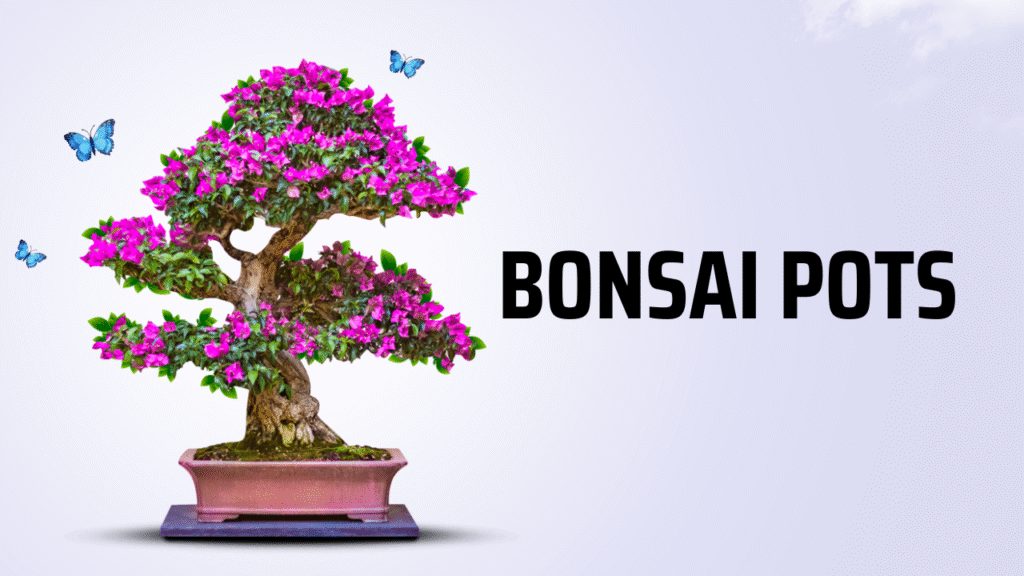
More Than a Container Bonsai pots
At first glance, a bonsai pot may seem like a simple container—but in the world of bonsai, it’s an essential part of the composition. The pot frames the tree, anchors it visually, and influences how we interpret its character. Just as a painting needs the right frame, a bonsai tree needs the right pot to complete the picture. The choice of shape, size, color, and texture affects the overall harmony of the design. A rugged, ancient-looking tree may pair beautifully with an unglazed, earthy pot, while a flowering bonsai might demand a lighter, more refined container to highlight its delicate features
Shapes That Speak
Bonsai pots come in many shapes—rectangular, oval, round, shallow, or deep—and each shape plays a role in storytelling. Rectangular and square pots are often used for masculine trees with upright, powerful trunks. Oval and round pots lend themselves to more gentle, flowing designs, such as cascade or informal styles. The depth of the pot is also crucial: deeper pots are suitable for larger trees or those with strong nebari (exposed roots), while shallower pots emphasize age and elegance. The pot is never just functional; it adds emotional weight, guiding the viewer’s eye and influencing the perceived strength or grace of the tree
The Balance of Function and Art
While aesthetics matter, bonsai pots must also support the tree’s health. Good bonsai pots have drainage holes to prevent waterlogging and often include wire holes to anchor the tree during repotting. The material—typically ceramic or clay—must be durable and breathable. Unglazed pots are favored for conifers like pines and junipers, while deciduous trees or flowering species often thrive in glazed pots with complementary colors. A blue pot might accent the blossoms of a cherry tree, while a dark brown pot enhances the texture of a twisted oak. The balance of form and function is what makes bonsai pot selection both an art and a science